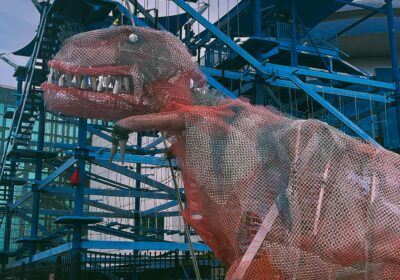Beyond the Grave: Ledger’s performance excites the imagination
‘The Imaginarium of Doctor Parnassus’ fights an uphill battle even before its first scene, with a performance by Heath Ledger ‘- who died in January of 2008 ‘- looming over every frame of the movie, especially when the film introduces his character as supposedly dead – hanged from a bridge.
So far, the movie has received a wide range of critical response, some writers expressing admiration and others holding unfounded abhorrence of it. This is unfortunate, since the movie stands among director Terry Gilliam’s most memorable work. It’s visually lasting and emotionally bittersweet.
‘The Imaginarium of Doctor Parnassus’ succeeds as a final film worthy of Ledger’s legacy.
The plot follows a performers’ caravan, led by Doctor Parnassus (Christopher Plummer). The theatre troupe travels across modern-day London, dressing up and acting out old stories.
The back of their stage holds a cellophane mirror that extraordinarily serves as an entrance into Parnassus’ mind. This portal leads to a kaleidoscope of subconscious images which are witnessed only by the caravan’s travelers and a few unsuspecting participants.
Ledger’s character, Tony, who is an amnesiac and a new addition to the caravan, soon proves to be a financial asset for the troupe, as his considerable sweet-talking skills allow him to raid every passing woman’s purse.’
But the group’s patriarch has larger concerns.
The millennia-old Parnassus strikes a deal with the devil, Mr. Nick (singer, Tom Waits), long before in exchange for immortality, and now the devil returns to claim his prize.
Ledger, who died during the production of this film, turns in another inventive performance, as he did throughout his career. He appears in every scene except those set in Parnassus’ imagination.
During these fantasy moments, three other actors, none of which stretch credibility or taste, replace him.’
Waits is another brilliant casting choice. The role lets him sport a thin mustache and bowler hat, wield a voice-silencing contraption that resembles a phonograph and generally make the absurd seem perfectly cool – as Waits also does in his musical career.
The fantasy sequences in the movie are always imaginative, (and in one scene with policemen singing ‘We Love Violence’ in ladies’ stockings, cheekily political) but sometimes they look distractingly CGI-assisted.
Yet the film never loses its footing once it exits Parnassus’ head, where troubles with the devil and other whimsy characters combine with real-life performers’ hardships. The ending even manages to poignantly comment on storytelling’s cyclical, never-ending nature.
‘The Imaginarium of Doctor Parnassus’ achieves a feeling of a street-side carnival. The movie is imperfect, but clearly heartfelt. In a growing age where cinema relies on computer animation, this movie understands that tinsel, strings and smoke can sometimes outshine any other special effects.







